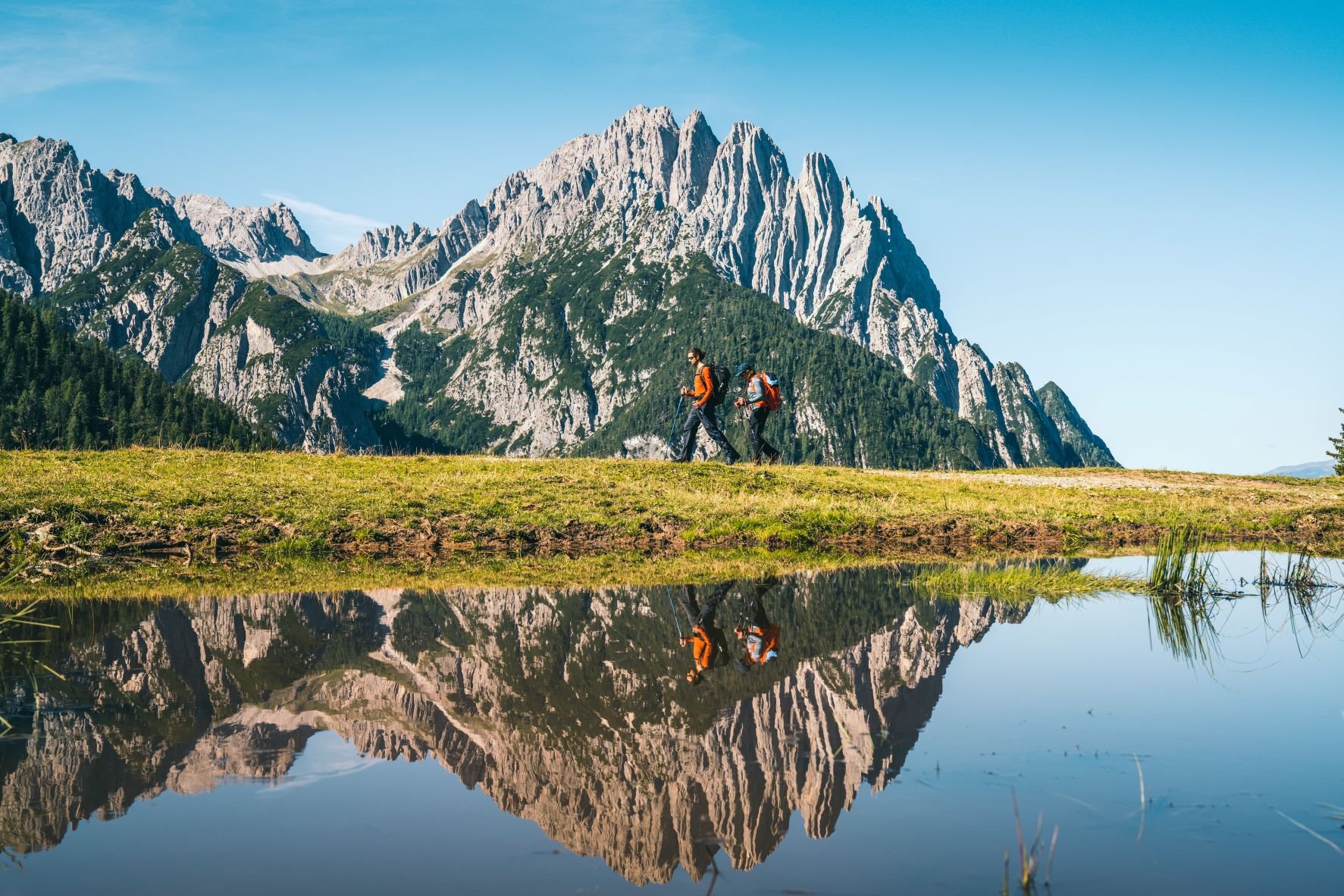A hiking break in the Austrian countryside will enable you to see some of the country’s stunning scenery that is only accessible by foot
For many, a holiday doesn’t mean rest and relaxation, but travel and adventure, and the mere idea of pulling on your walking boots and getting out and about in nature gets the senses tingling with anticipation.
Once the preserve of older generations, hiking now attracts a following of all ages raring to escape the urban limits and follow the well-trodden tracks to freedom and discovery… and there’s no better location to go hiking in than Austria. With its spectacular vistas of verdant Alpine forests, majestic mountains and shimmering lakes, Austria really is the ideal destination in which to get active. Breathing in its fresh mountain air enables you to clear your mind and escape the everyday, helping you to feel fully recharged and revived. And exercise, such as hiking, releases endorphins – the hormones that make us feel good – which can help to reduce anxiety and can vastly improve mood.
Levelling it out
Austria’s hiking routes, paths and mountain tours are well signposted and there’s something for every level, from beginner to those seeking a more adventurous challenge. Beginners will enjoy the Dr Vogelgesang Gorge, the longest gorge in Upper Austria and the second longest in the country. This family-friendly hike takes about 1.5 hours and there’s a cosy mountain hut waiting at the end, ready to reward hikers with a delicious local meal.
In the Tirol region, intermediate hikers will be captivated by the circular Waterfall Trail in the Hintertux Glacier resort, which lasts around 2 hours and takes in a river as well as the Schraubenfall and Kesselfall waterfalls with their naturally formed granite bridges, caves and ravines.
More experienced hikers can embrace the long-distance Schladminger Tauern Peak Trail, a 6-7 day high Alpine route in the Styria region that offers incredible views and passes by more than 300 beautiful mountain lakes, waterfalls and torrents. However, surefootedness and a head for heights are a must on this route.
Hut hospitality
Regardless of whether you choose to take on a multi-stop hike or a more manageable route that can be completed in a day, one of the draws of an Austrian hike is the network of huts located along the routes that allow you to stop, recharge and replenish resources. Each hut has its own quirk and offers a variety of facilities. Not far from the capital Vienna is the Habsburghaus, which has rooms and dormitories for overnight stays and can be reached via a number of trails ranging from easy to intermediate. Meanwhile, the Franz Fischer Hütte in Salzburg’s Lungau’s Riedingtal is described as a ‘veggie-hut with a view’ with accommodation for up to 34 people and mouth-watering vegetarian cuisine, and the Gollinghütte, located close to a waterfall with wild horses roaming freely nearby, is an excellent base from which to explore Styria’s Klafferkessel nature reserve. While the inviting Schwussnerhütte – which can only be reached via a leisurely hike through Carinthia’s Seebachtal in the Hohe Tauern National Park – is highly regarded for its local delicacies, from Schwarzbeerschmarrn (blueberry pancakes) to kärntner kasnudeln (cheese ravioli). And if you’re still not sold on the idea of exerting yourself too much, perhaps a stroll alongside one of Austria’s sparkling clear lakes is the answer. Whatever your fitness ability and however you like to unwind; from active holidays, to wellness breaks, to city trips packed with food and culture, Austria offers something for everyone.
Take a hike
Don’t forget some essential checks before heading out on your hike.
Plan your route
The local Tourist Office can recommend suitable hikes or book an experienced guide who can tell you about the local culture and nature. Check for huts along the way, where you’ll be able to refill your water, eat and potentially stay overnight. Be honest with your ability levels, too, and check the altitude increases on planned hikes.
Pack the essentials
You’ll need water and snacks, but don’t laden yourself down with too much weight, especially if there are opportunities to restock en route at a hut. Suitable clothing for wet and cold weather, as well as sun protection (hat, suncream and sunglasses), plus a mobile phone and torch will be necessary.
Check the conditions
Alpine weather can change quickly, so check a detailed forecast. Also, plan to set out early to avoid the height of the summer heat and any freak thunderstorms that tend to occur in late afternoons and evenings. A good rule of thumb is to aim to have completed two-thirds of your route by midday, and that way, you should avoid returning after dark, too.
For more information, visit austria.info
Photography: Osterreich Werbung/Lukas Nagler; Wildkogel-Arena-Neukirchen-Bramberg


